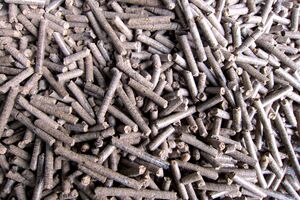Knowledge fuels change - Support energypedia!
For over 10 years, energypedia has been connecting energy experts around the world — helping them share knowledge, learn from each other, and accelerate the global energy transition.
Today, we ask for your support to keep this platform free and accessible to all.
Even a small contribution makes a big difference! If just 10–20% of our 60,000+ monthly visitors donated the equivalent of a cup of coffee — €5 — Energypedia would be fully funded for a whole year.
Is the knowledge you’ve gained through Energypedia this year worth €5 or more?
Your donation keeps the platform running, helps us create new knowledge products, and contributes directly to achieving SDG 7.
Thank you for your support, your donation, big or small, truly matters!
Biomass pellet
Biomass pellet is a small, cylindrical, and condensed form of organic material derived from various renewable sources. These pellets serve as a viable and sustainable alternative to traditional fossil fuels and play a significant role in addressing energy and environmental challenges. This article provides an overview of biomass pellets, their production, applications, advantages, and environmental impact[1][2].
Production
Biomass pellets are typically produced from a variety of organic materials, including wood, agricultural residues, energy crops, and even some types of waste. The production process involves several key steps[3]:
- Feedstock Collection: The first step involves the collection of suitable feedstock, which can include wood chips, sawdust, straw, corn stalks, and other organic materials.
- Drying: To reduce the moisture content and improve combustion efficiency, the collected feedstock is dried to a specific moisture level.
- Size Reduction: The dried feedstock is then processed through chippers or grinders to achieve a uniform particle size.
- Pelletization: The processed material is compressed under high pressure through a pellet mill[4], resulting in the formation of cylindrical pellets. No binders or chemicals are usually added during this process, as the natural lignin content in the biomass acts as a binding agent.
- Cooling and Packaging: The newly formed pellets are cooled and then packaged for distribution and use.
Applications
Biomass pellets find a wide range of applications, primarily as a source of renewable energy. Some of the key applications include[5]:
- Heat and Electricity Generation: Biomass pellets are commonly used in residential and industrial boilers, as well as power plants, to produce heat and electricity.
- Space Heating: Pellet stoves and pellet boilers are popular choices for residential and commercial space heating due to their efficiency and low emissions.
- Industrial Processes: Some industries use biomass pellets as a source of heat for drying processes or as a supplementary fuel in manufacturing.
- Combined Heat and Power (CHP): In combined heat and power systems, biomass pellets are utilized to generate both electricity and useful heat simultaneously.
- Animal Bedding: In the agricultural sector, biomass pellets are used as bedding material for livestock, providing a comfortable and absorbent surface.
Advantages
Biomass pellets offer several advantages:
- Renewable Energy Source: They are derived from renewable resources, making them a sustainable alternative to fossil fuels.
- Reduced Greenhouse Gas Emissions: Biomass pellets produce lower greenhouse gas emissions compared to fossil fuels, contributing to climate change mitigation.
- Waste Utilization: They can be made from agricultural residues and forestry byproducts, reducing waste and promoting resource efficiency.
- Energy Efficiency: Biomass pellet combustion is highly efficient, resulting in reduced energy consumption and cost savings.
- Energy Security: Using locally sourced biomass can enhance energy security by reducing dependence on imported fossil fuels.
Environmental Impact
While biomass pellets have several environmental benefits, their production and use can also raise environmental concerns. These include:
- Land Use Change: Large-scale biomass production may lead to land use changes that can impact ecosystems and biodiversity.
- Air Quality: Improper combustion or low-quality pellets can emit particulate matter and other pollutants, affecting air quality.
- Sustainable Sourcing: Sustainable forestry and agriculture practices are crucial to ensuring that biomass production remains environmentally friendly.
- Transportation Emissions: The transport of biomass feedstock over long distances can result in carbon emissions.
Conclusion
Biomass pellets are a versatile and environmentally friendly energy source with applications in heating, electricity generation, and more. Their production and use can contribute to sustainable energy solutions and reduce greenhouse gas emissions when managed with proper environmental considerations. As the world continues to seek alternatives to fossil fuels, biomass pellets are likely to play an essential role in the transition to a greener and more sustainable energy future[6].
- ↑ "Biomass explained - U.S. Energy Information Administration (EIA)".
- ↑ "Bioenergy Basics".
- ↑ How to produce biomass pellets and the composition and application of biomass pellet production line?
- ↑ Pellet mill output, types and principles.
- ↑ Application of biomass pellets and the important role of biomass pellet production line in various industries.
- ↑ IRENA 2014, p. 20-21.




















